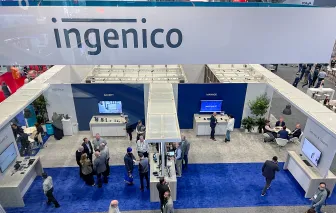Similar to many countries in the world, Canada's transit revenues were severely impacted in 2020 due to the COVID-19 pandemic. According to Interac, TransLink in Vancouver reported an 83% decline in ridership, while GO Transit in Southern Ontario lost 90% of its passengers.
While riders are slowly returning to public transit, there are many variables affecting pre-pandemic consumer behaviour and stifling growth in ridership. These include changes in ridership patterns, remote working for regular commuters, restrictions on tourism, demographic housing shifts from urban to rural and others. To address this, many transit operators are evaluating an investment in contactless technology infrastructure as part of their strategy to grow revenue, drive cost efficiencies, improve the consumer experience and ultimately increase ridership.
Why Contactless?
Contactless as a payment method has existed in Canada for years but experienced a significant increase in popularity in 2020 due to the pandemic. According to a Mastercard global study, 76% of Canadians indicate contactless is their preferred method of payment when making retail purchases citing cleanliness, convenience/speed and safety. The study also revealed 80% of Canadians will continue their frequent use of contactless once the pandemic impact has lessened.
Contactless in Transit
Contactless payments improve the transit experience for riders relative to the status quo. Contactless is easier than paying with cash, transit tokens or a credit/debit card using a PIN. Historically, a rider purchases a ticket or a pass from a station kiosk, online or via a card/ticket dispensing kiosk for a local subway ride. With contactless, payment is immediate (measured in milliseconds). On a commuter train, where tickets are often purchased in the car, ticket collectors can be equipped with mobile payment acceptance devices that are contactless-enabled, making these transactions faster and more efficient.
But contactless enables a far more critical user experience in transit – the ability for riders to “tap and go” without stopping or proactively purchasing a ticket or pass in advance. The U.S rollout with OMNY in NYC is a successful testimonial of this. In Canada, Metrolinx is the most recent mass operator to introduce this enhanced user experience for daily commuters in Metropolitan Toronto.
How Does It Work?
With Metrolinx, riders simply tap their commercial contactless cards, proprietary transit cards, mobile wallets or wearables directly on the payment acceptance device to enter the station platform, streetcar or bus. They are also required to tap the same payment card or mobile wallet when they exit. The process is identical to how riders interact with their existing transit cards. Of significance, consumers use their contactless payment cards (credit, debit or transit) directly with no transit staff involvement.
This process improvement is beneficial to both riders and operators. Riders enjoy the same convenience that they experience when they shop elsewhere, and it allows them to minimize time buying a ticket or a pass (especially tourists and occasional users) to ride the subway, buses, streetcars or other transit services. For operators, this flexible payment system makes it more efficient to move greater numbers of riders through the transit system in less time. It also offers possible savings as operators may save the capital cost of card vending machines as most riders won’t need to use them under the new system.
Future of Transit
While the “tap and go” use case for transit is still fairly new to Canada, it will help attract users back to public transportation as it provides significantly improved convenience and hygienic safety they are looking for. Transit adoption of contactless technology leverages Canadian consumer trust and familiarity in an embraced technology supported by a trusted Canadian banking and payment network.
If you are looking to implement contactless payment acceptance and an open payment system in your transit business and would like to learn more, get in touch with us.
Greg Scott is Head of Sales, Canada at Ingenico











